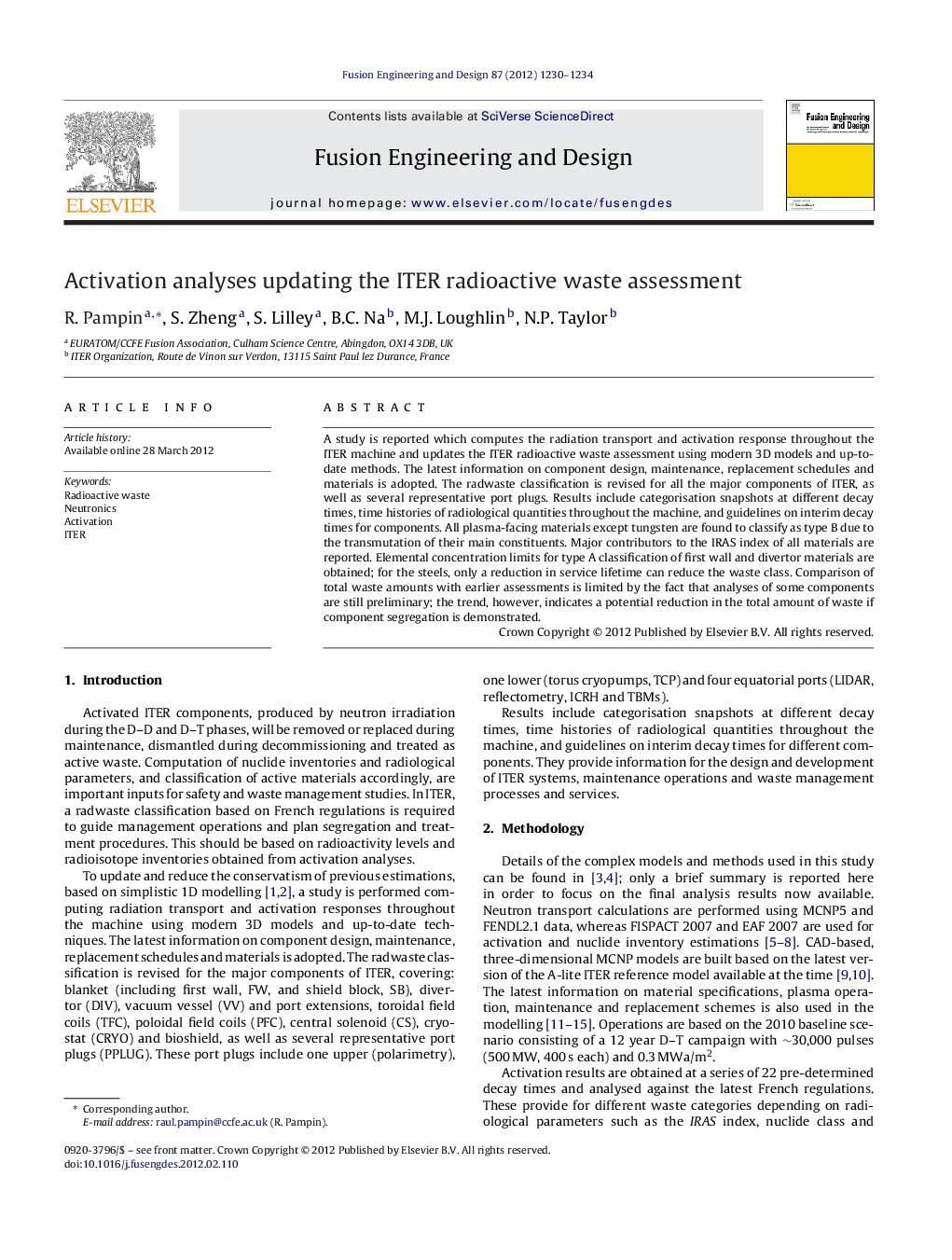| Article ID | Journal | Published Year | Pages | File Type |
|---|---|---|---|---|
| 272063 | Fusion Engineering and Design | 2012 | 5 Pages |
A study is reported which computes the radiation transport and activation response throughout the ITER machine and updates the ITER radioactive waste assessment using modern 3D models and up-to-date methods. The latest information on component design, maintenance, replacement schedules and materials is adopted. The radwaste classification is revised for all the major components of ITER, as well as several representative port plugs. Results include categorisation snapshots at different decay times, time histories of radiological quantities throughout the machine, and guidelines on interim decay times for components. All plasma-facing materials except tungsten are found to classify as type B due to the transmutation of their main constituents. Major contributors to the IRAS index of all materials are reported. Elemental concentration limits for type A classification of first wall and divertor materials are obtained; for the steels, only a reduction in service lifetime can reduce the waste class. Comparison of total waste amounts with earlier assessments is limited by the fact that analyses of some components are still preliminary; the trend, however, indicates a potential reduction in the total amount of waste if component segregation is demonstrated.
► Comprehensive updated of ITER radwaste assessment. ► Latest coupled neutronics and activation methods. ► Type A waste at shutdown decays to TFA within 100 years. ► Most type B waste at shutdown is still type B after 100 years.
